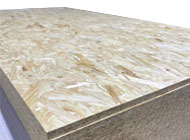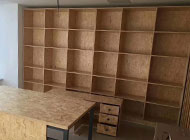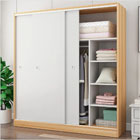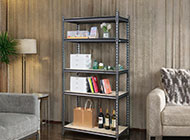Reviewed by Karena
Updated: July 12, 2024
Particle board typically supports around 32 lbs per square foot, depending on its thickness, density, and support conditions. Ensure it stays dry and well-supported for optimal strength.
1. What Is Particle Board?
Particle board is a type of engineered wood product made from wood chips, sawmill shavings, and sometimes sawdust, all pressed together with a synthetic resin or adhesive. It's a popular choice for various DIY projects and furniture due to its affordability and versatility. However, understanding its weight-bearing capacity is crucial for ensuring the safety and longevity of your projects.
2. Weight Capacity of Particle Board
The weight capacity of particle board is influenced by several factors, including its density, thickness, and the conditions under which it is used.
Density and Thickness: The density of particle board typically ranges from 31 to 58.5 pounds per cubic foot. A higher density means the board can support more weight. For example, a 1/2-inch thick, 4x8 sheet of low-density particle board might hold around 41 pounds, whereas higher density boards can support significantly more weight.
Span and Support: How the particle board is supported greatly affects its load-bearing capacity. Particle board that spans a longer distance without support will hold less weight compared to one that is well-supported. Additional supports such as braces or brackets can help distribute the load and increase the weight the board can handle.
Moisture and Environmental Conditions: Particle board's performance can be compromised in high-moisture environments. Exposure to moisture can cause the board to swell and weaken, thereby reducing its weight-bearing capacity. Proper sealing and finishing can help protect particle board from moisture and enhance its durability.
3. Enhancing the Strength of Particle Board
Particle board is inherently weaker than other wood products like plywood or medium-density fiberboard (MDF), but there are ways to enhance its strength:
- Moisture Protection: Moisture is a significant weakness for particle board. Applying sealants or laminates can protect it from water damage and increase its longevity. Moisture can cause the board to swell and deteriorate, so keeping it dry is essential.
- Reinforcement Techniques: Reinforcing particle board with aluminum framing, doubling up boards, or using thicker materials can improve its load-bearing capacity. Using appropriate screws and fasteners specifically designed for particle board can also help maintain its integrity. Additionally, edge-banding can help protect the edges of particle board from damage and moisture infiltration.
4. Comparing Particle Board to Other Materials
When deciding between particle board and other materials like plywood or OSB (oriented strand board), consider the following:
- Strength and Durability: Plywood generally offers better strength and durability due to its cross-grain structure, making it suitable for applications requiring higher load-bearing capabilities. OSB is also stronger than particle board and more resistant to moisture.
- Cost-Effectiveness: Particle board is more affordable than plywood and OSB, making it a cost-effective option for projects where high strength isn't critical. It’s particularly suitable for shelving, cabinetry, and furniture that won't be subjected to heavy loads.
- Workability: Particle board is easier to cut and shape than plywood, which can make it a more convenient option for some projects. However, it is more prone to splitting when nails or screws are inserted, so pre-drilling holes and using screws designed for particle board can help.
5. Practical Applications of Particle Board Shelving
Particle board can be used in various DIY and home improvement projects, provided its limitations are acknowledged and addressed:
- Bookshelves: Particle board is ideal for bookshelves when properly supported and reinforced. Ensure the use of metal brackets and wall anchors to distribute the weight evenly and prevent tipping. Additionally, veneering or laminating the particle board can enhance its appearance and durability.
- Desks and Workspaces: For desks, particle board can be used for the desktop and shelving, supported by metal or wood legs. Reinforcing joints and using suitable fasteners will ensure the desk can support the weight of computers, books, and supplies. A well-constructed particle board desk can offer a stable and functional workspace.
- Cabinetry: Particle board is commonly used in cabinetry due to its affordability. When covered with laminate or veneer, it can offer a durable and aesthetically pleasing finish. However, it’s essential to avoid excessive moisture exposure, as this can weaken the material and cause it to deteriorate. Using edge-banding can help protect the edges from damage and improve the cabinet's lifespan.
- Boltless Shelving: One more thing to add about the use of particle board: the shelves of the boltless rivet shelving produced by our company are basically made of particle board, which can be veneered and edge-sealed according to customer needs. This type of shelf has a load-bearing capacity of 800-1000 pounds per layer. This makes it an excellent choice for industrial or commercial storage applications, where heavy items need to be stored safely and securely.
6. Specialized Boltless Rivet Shelving Solutions
For heavy-duty applications, such as industrial or commercial shelving, boltless rivet shelving with particle board shelves is a robust solution.
- Load-Bearing Capacity: The particle board shelves used in boltless rivet shelving systems produced by our company can be veneered and edge-sealed according to customer needs. These shelves boast an impressive load-bearing capacity of 800-1000 pounds per layer, making them ideal for heavy storage needs. This high load-bearing capacity ensures that even the heaviest items can be stored safely without risk of shelf failure.
- Customization Options: The ability to customize the veneer and edge sealing allows for enhanced durability and aesthetic appeal, tailored to specific user requirements. Customers can choose from a variety of finishes to match their storage environment, ensuring both functionality and style.
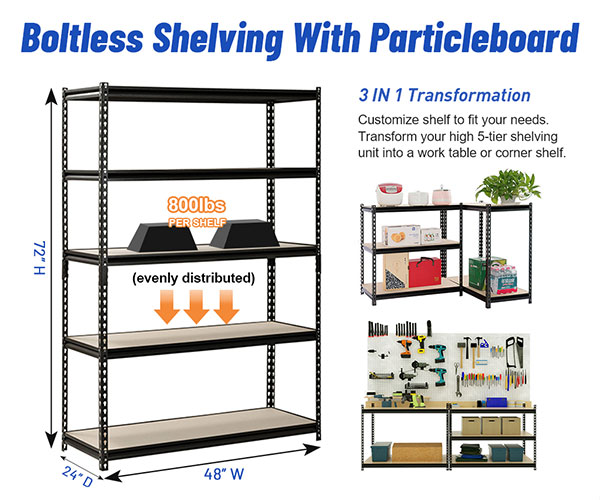
7. Conclusion
Understanding the weight capacity and proper use of particle board is essential for safe and successful DIY projects. While it may not be as strong or durable as plywood or OSB, with the right techniques and precautions, particle board can be a highly functional and cost-effective material for shelving and furniture. Always consider reinforcing your structures, protecting against moisture, and using the appropriate fasteners to maxim ize the lifespan and reliability of your particle board projects.
Post time: Jul-03-2024


